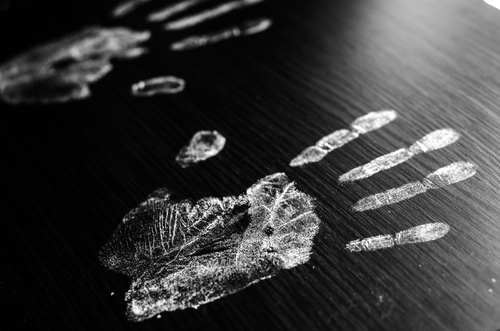NSCR and VU examine the use of palm prints in criminal proceedings

When an offender has left a palm trace at the scene of the crime, this can be used to identify and prosecute him. Until 2010 it was customary for the police that when a suspect was arrested, aside from photographs, also fingerprints and palm prints were taken.1 These prints were sent to HAVANK, the database of the police. Because of new legislation starting from 2010, the police became reluctant to take palm prints from suspects. This new legislation requires in particular that there should be a 'research interest'. In each case it must be established whether that specific interest is present. If that is the case, palm prints are allowed to be taken from a suspect. As a result, the number of palms prints in HAVANK has decreased, and, as a consequence, the role palm analysis plays during the prosecution has also shrunken.
Commissioned by the WODC, NSCR and VU now study whether applying palm analysis has an additional value on top of fingerprints and DNA, as well as "newer" methods such as iris scans and facial recognition. Also, the researchers will pay attention to privacy issues and make a comparison to some other European countries where hand palm analysis is being used on a regular basis.
Unique?
Finger traces would to a large extent be unique and personal, and the same would apply for palms, soles and toes. In the Netherlands, fingerprint experts (dactyloscopists) are employed at the police units. With advanced methods these experts can make finger- and palm traces visible. HAVANK manages approximately ten million fingerprints, but the number of palm prints is much smaller.
Usefulness of traces
Finger- and palm traces are not always available or usable. Perpetrators sometimes wear gloves to prevent leaving traces. Moreover, the quality of the fingerprints and palm traces may not be sufficient for an analysis.
However, finger- and palm traces are not transferable from one place to another, and this constitutes an important advantage over DNA. Sometimes burglars leave cigarette butts of other people in the house where they break in, to misguide the police about DNA. With finger- or palm traces this would be a lot more difficult.
Palm traces may give an indication of what the perpetrator was doing. Was he leaning against a wall? Was he writing a letter or just reading the letter? Did he look through a window allowing the sides of his palm to become visible? Palm traces provide information about these activities which may be of interest to the police investigation.
1Palm traces are the prints of palms that are found at a crime scene; palm prints are the reference prints taken from a suspect.
Deel dit artikel
Actuele berichten

